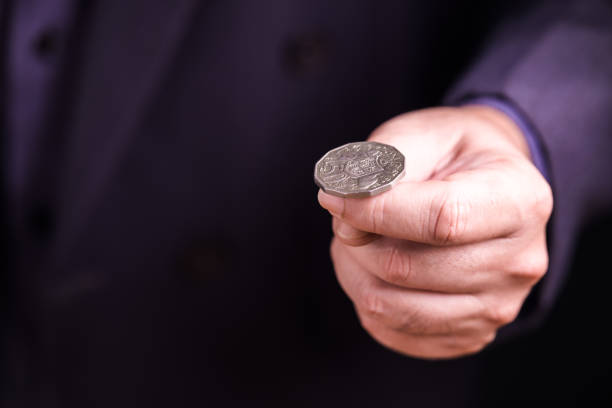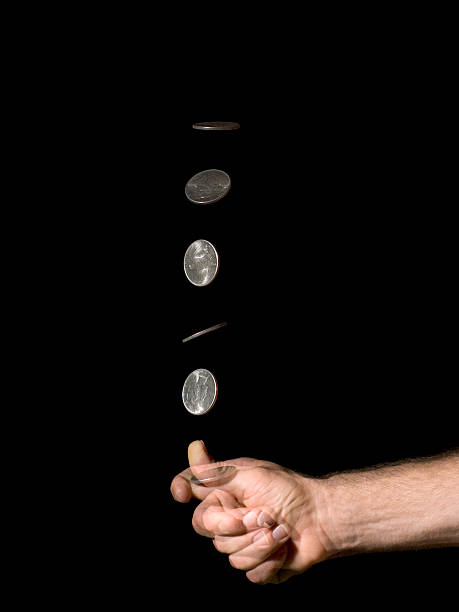
Need to make a decision but don't have a coin on hand? Toss the Coin online with TheOwlBay! This tool lets you virtually flip a coin and leave the outcome to chance. Simply select heads or tails and click the button to flip the coin. It's that easy! The tradition of flipping a coin to make a decision dates back to the Roman Empire, where silver coins were used with the terms 'heads or tails' referring to the images on the coins. This practice was adopted by Julius Caesar and even used to settle legal disputes. In the Middle Ages, the game was known as 'heads and pile', with the opposite of 'heads' being the pile.
With our virtual coin toss, you can use this age-old method to make decisions in your daily life, like deciding who goes first in a game or whether to buy that item you've been thinking about. And if you like our coin-tossing tool, be sure to check out our Roll Dice and Spin the Wheel features to leave more decisions to chance!

Determining which side of a coin is the 'heads' or 'tails' can be a challenge, as numismatics - the study of money - defines a coin's sides as the obverse and reverse. The obverse, or principal side, often features a symbol representing power or authority, such as the head of a monarch or a well-known state representative. In cases where a coin does not feature such figures, the side bearing the name of the country is usually considered the obverse.
We would like to extend our gratitude to those who have generously donated images of coins to our collection. If you have high-quality coin pictures that you would like to donate and do not see your currency listed here, please feel free to email us. Please note that you must own the copyright to the pictures, or they must be in the public domain.
TheOwlBay is incredibly versatile and can be used for a variety of purposes, such as deciding between two options, playing Heads or Tails with friends, making yes or no decisions, determining which team goes first in a game, resolving a dispute between two players, breaking a tie, choosing whether to do something or not, providing an alternative to Rock, Paper, Scissors, deciding which movie or show to watch, teaching children and students about probability, and making picks in fantasy leagues.
The use of metal coins can be traced back to as early as the 7th century BC, but the first accounts of coin flipping date back to ancient Rome. The Romans called the game "navia aut caput" meaning "ship or head" because some coins featured a ship on one side and the emperor's head on the other.

Julius Caesar himself endorsed the practice when he started minting coins with his name on them in 49 BC. The outcomes of coin flips were legally binding and were used for important decisions related to criminality, property, and marriage. The British referred to the game as "cross and pile" due to the cross on some coins, while in Peru, it is still called "face or seal." In ancient China, coins were minted with a ship on one side and a head on the other, leading to the game being called "ship or head." While the origin of coin flipping is debated, some historians believe it started in Ancient Greece, where players covered one side of a shell with "black pitch" and called the correct side in the air. Today, coin flipping is used worldwide in sports such as football, cricket, tennis, and fencing to determine the starting team or to break a tie. It's also used in politics to decide election outcomes and even in academic publications to determine author order.
When confronted with difficult choices, flipping a coin can be a helpful tool. However, sometimes the outcome may not be satisfactory. In such cases, instead of abiding by the coin toss, you can follow your initial choice. Sigmund Freud, a famous psychologist, recognized this phenomenon and often utilized it to his advantage. In instances where individuals struggled to decide, Freud suggested flipping a coin, and then advised them to analyze their emotional reactions to the result. This technique is known as the Freudian Coin Toss. By examining your emotions, you may realize that you had a preference all along.
A group of researchers at the University of Basel conducted an experiment to study the effect of a random decision aid, such as a coin flip, on the decision-making process. In the online experiment, participants were provided with decision information and asked to make a preliminary decision. They were then offered further information before making a final decision. Some of the participants witnessed a virtual coin toss between the preliminary and final decision, with heads representing one choice and tails representing the other. Participants were told that the coin toss could be helpful but that their final decision should be based on their own preference. The coin toss animation displayed was either the same as their preliminary decision (coin-congruent) or the opposite (coin-incongruent). Other participants were asked to wait while the next part of the study loaded, and then all participants were asked whether or not they wanted further information before making their final decision.

If you're struggling to make a decision, flipping a coin can be a simple trick to help you out. A recent study from researchers in Switzerland examined how this can work. For example, imagine choosing between a high-paying job that requires long hours or a less prestigious job with more flexibility. After flipping a coin, the person might find that they were disappointed with the result and decide to take the other job. The study suggests that flipping a coin makes the consequences of a decision more real, which strengthens someone's feelings and helps them recognize their true preferences.
In the study, participants were asked to choose between two menu options for a five-course meal. Some were told to ignore the results of the coin flip, while others used the coin flip as a decision-making aid. Those who considered the coin flip became more certain about their preferences. The study also found that suggestions from others could act as a catalyst for decision-making, even if the suggestions were not agreed upon. Ultimately, this study shows that choosing an option, whether through a coin flip or a suggestion, can help clarify our priorities and lead us to recognize which outcome we truly want.
Understanding the Basics and Solving Examples.
Coin tossing is a random experiment with two possible outcomes - head or tail. The coin toss probability formula helps to determine the probability of obtaining each of these outcomes. By using the formula, which states that the probability of an event is the number of favorable outcomes divided by the total number of outcomes, one can easily calculate the probability of getting head or tail on a single coin toss. This article also includes solved examples demonstrating the application of the coin toss probability formula in determining the fairness of coins and finding the probability of getting only one tail on two coin tosses.

In the context of the coin toss probability formula, the likelihood of an event happening is determined by dividing the number of favorable outcomes by the total number of possible outcomes. This principle applies to coin tosses since there are only two possible outcomes: heads or tails. As a result, the probability of obtaining heads is equal to the probability of obtaining tails, both of which are equal to 1/2. The subsequent section of solved examples illustrates how these principles are used in practical situations.
Consider this scenario: Coin-A is flipped 100 times and tails come up 50 times. Coin-B is also flipped, but the number of times it is flipped is unknown. However, it is known that heads come up 48% of the time. Which coin is more fair? To determine the fairer coin, we need to compare the relative occurrence of the desired outcome for each coin. For Coin-A, the relative occurrence of tails is 0.5 (50/100). For Coin-B, we only have the relative occurrence of heads, which is 0.48. Since we don't know how many times Coin-B was flipped, we cannot make a fair comparison. Based on the information given, we can conclude that Coin-A appears to be fair, as the relative occurrence of tails is close to 1/2 over a large number of flips.
Sep 11, 2022
Reply
Is the probability of getting Heads or Tails equal in this coin flip?
Oct 21, 2022
Reply
How does the Australian version of the coin toss, called "two up," work?
Jan Smith
July 11, 2022
Reply
Can you provide an explanation of what a coin toss is?